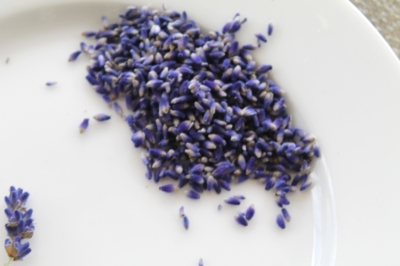Given the fact that especially the true lavender in the garden likes to self-seed, otherwise reluctant germination of lavender seeds seems paradoxical. In fact, lavender germinates only when the conditions are right.

Use only mature seeds
Lavender seeds, unlike the plants, you can prepare on the windowsill or in the greenhouse already from February / March. However, in the open field the seed should be planted only when frosts are no longer expected. This applies in particular to the sensitive Schopflavendel, which should not be cultivated anyway better in the open field. In the trade you can usually only get seeds of the so-called “wild lavender”, by which is meant the true lavender. This seed-bearing variety is the easiest to propagate by seed, with all others the method does not work so well. Lavandin – the Provencal lavender – is even sterile and can be propagated only by cuttings. On the other hand, if you want to use lavender seeds from your own garden, you should first let them mature properly. The seeds are formed immediately after the flowering of the plant, so you just leave the flowered stems on the plant.
Seed stratify in the refrigerator if possible.
The best way to germinate lavender seeds is to stratify them beforehand, that is, expose them to a prolonged period of cold weather. However, this measure is not strictly necessary, because you can sow the fine grains in this way. However, stratification increases the likelihood of success. And this is how you proceed:
- Take a resealable (say, zip-lock) freezer bag and some (little) sand.
- Slightly moisten the sand and fill it into the bag.
- Now place the seeds on top of the sand.
- Seal the bag and place it in the vegetable compartment in the refrigerator.
- The seeds should store there for about one to two weeks.
- Then fill growing pots with growing soil and simply pack the sand with the seeds on top. Do not cover with cling film, because lavender does not tolerate high humidity very well.
Lavender is a light germinator
Gardeners generally distinguish between dark and light germinators, and light germinating varieties are best brought to a bright location, and also, if possible, should not be covered with soil. Instead, it is sufficient to press the fine seeds lightly against the previously moistened soil, for example with a board. Keep the seeds evenly moist, which works wonderfully with a spray bottle. Light sprouts tend to have very fine seeds that are quickly washed away when watered. Make sure the lavender likes it drier once it shows the first leaflets.
Sowing lavender seeds
Lavender plants grown from seed are rarely true to variety, meaning they differ, sometimes considerably, in the color and shape of their leaves, in growth habit and height, and sometimes in the color of their flowers. If you want plants that look alike, it is better to resort to cuttings propagation. Planting seeds is done in this way:
- Plants pre-pulled in February / March usually bloom in the same year.
- Use low-nutrient growing or herbal soil, preferably germ-free.
- Fill this substrate into growing pots or into an indoor greenhouse.
- Moisten the soil before sowing the seeds.
- Place the seeds on the soil and cover them only very lightly with soil.
- Be sure to keep the humidity low – no drips should form in the greenhouse.
- The seedlings need a bright place as well as temperatures around 20 °C.
- Germination occurs after one to two weeks, but can take much longer.
Tips & Tricks
You can prick the seedlings and plant them at least five centimeters apart as soon as the first leaflets appear after the cotyledons. Shorten the roots a little with clean nail scissors, then they will branch better.

